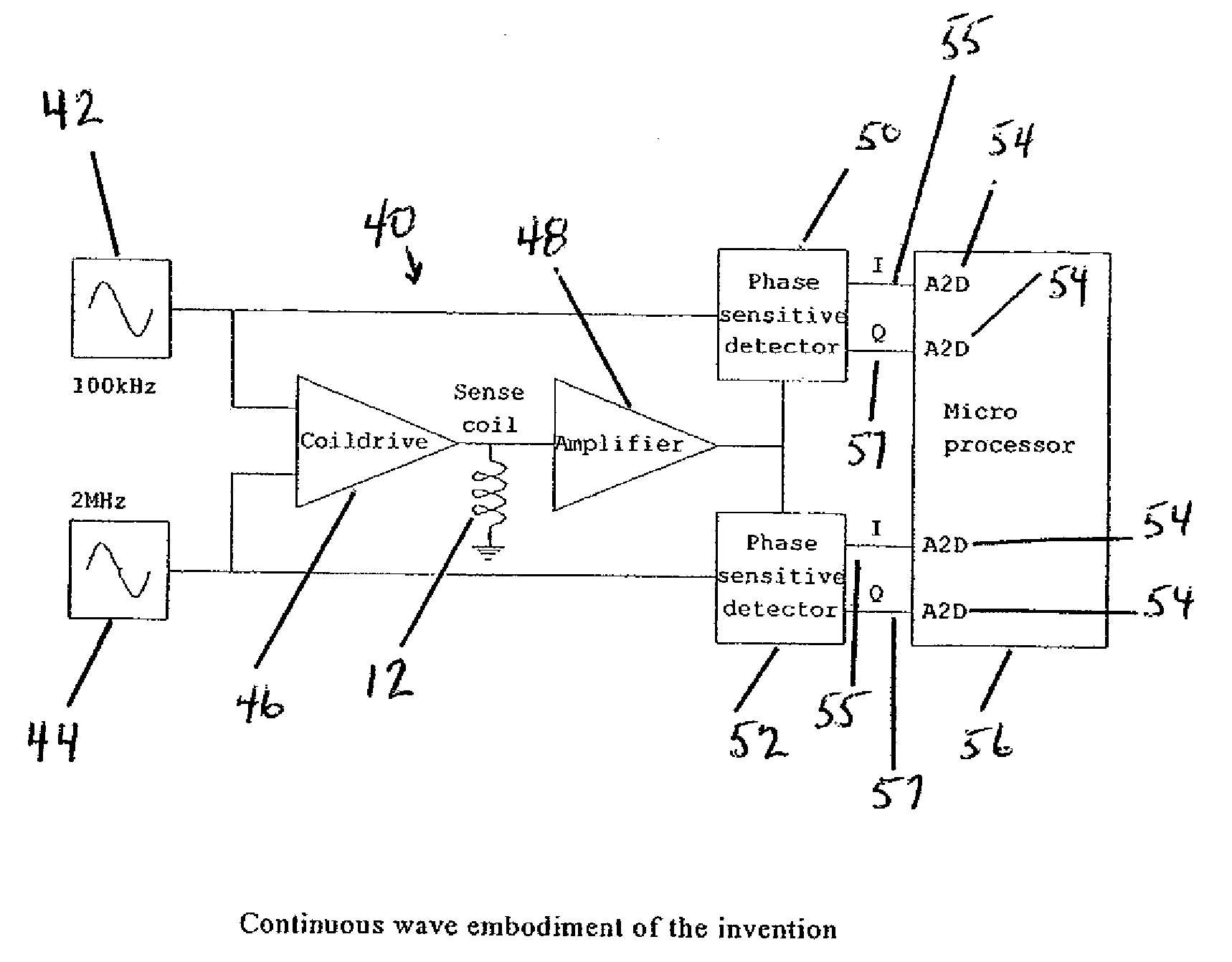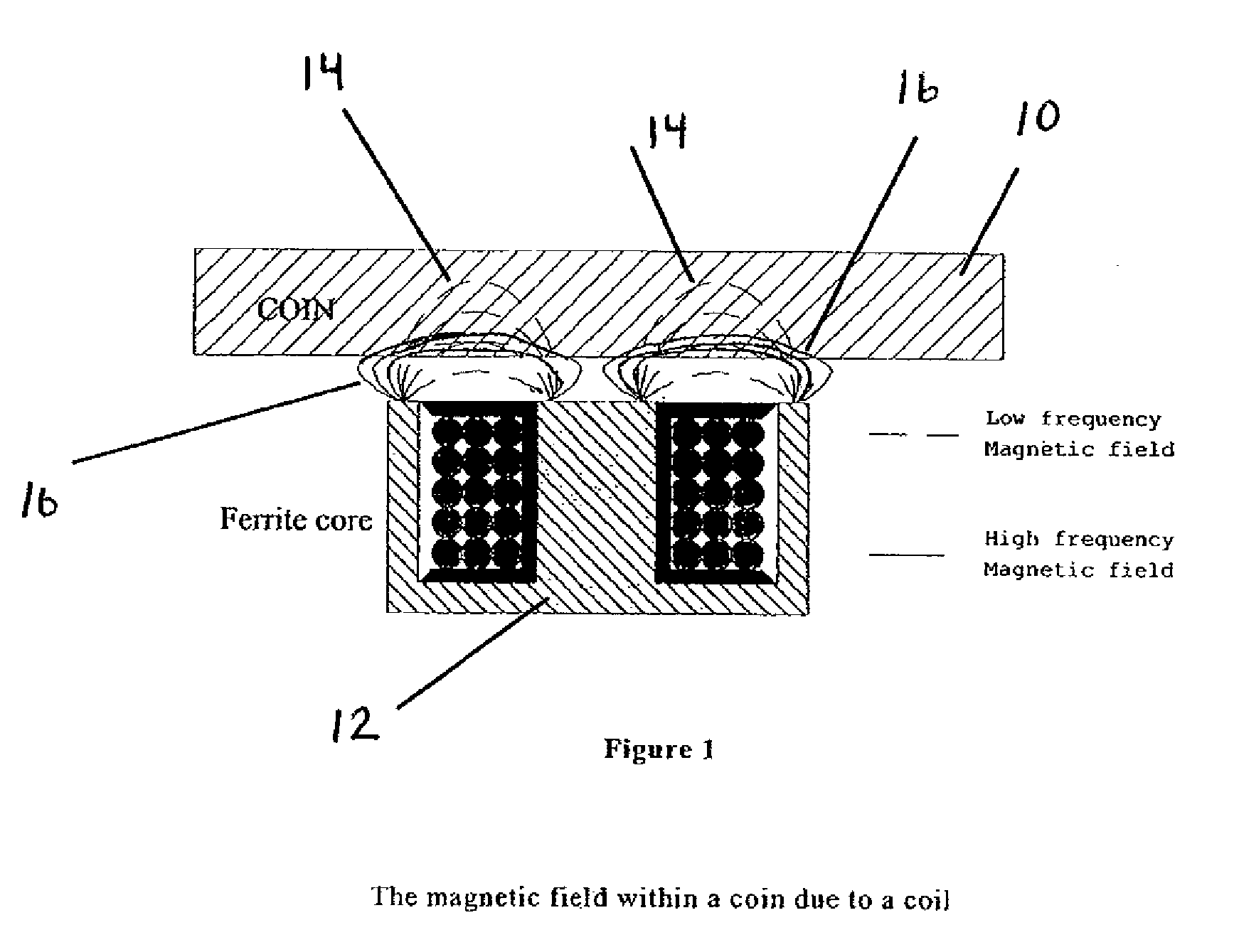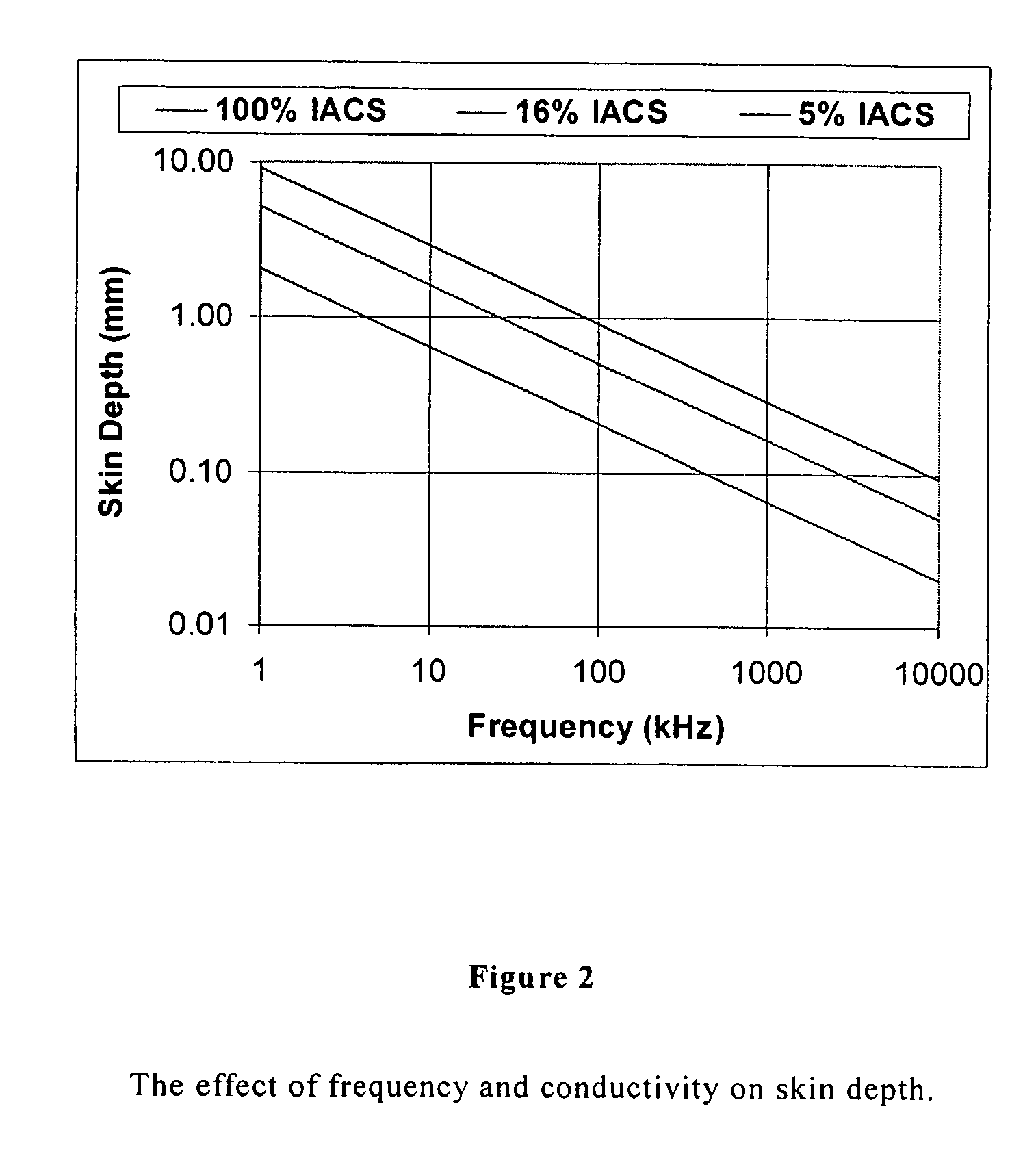Coin discriminators
a coin and discriminator technology, applied in coin testing, paper-money testing devices, instruments, etc., can solve the problem of not being able to deal with bogus coins of similar metal content that are generally accurate, and achieve the effect of increasing the number of counterfeit coins that are rejected
- Summary
- Abstract
- Description
- Claims
- Application Information
AI Technical Summary
Benefits of technology
Problems solved by technology
Method used
Image
Examples
Embodiment Construction
[0043]In one embodiment a single coil 12, such as the coil 12 of FIG. 1, is driven at two frequencies (e.g. a low frequency and a high frequency). The low frequency is chosen to develop a low frequency magnetic field 14 that penetrates to a skin depth of just less than 1 mm, a depth that is less than the thickness of coins 10 under test. The high frequency is chosen to develop a high frequency magnetic field 16 that penetrates to a skin depth of about 0.1 mm. The presence of a coin 10 causes the apparent inductance and resistance of the coil 12 to change. These changes are measured at both frequencies. From these changes the conductivity of the coin can be calculated. The high frequency change gives the surface conductivity and the low frequency gives the bulk conductivity.
[0044]If a large number of coins 10 are measured and the conductivities are plotted against each other a distribution 20 like the one shown in FIG. 3, is produced. The graph shows that coins 10 with a high surface...
PUM
| Property | Measurement | Unit |
|---|---|---|
| frequencies | aaaaa | aaaaa |
| frequency | aaaaa | aaaaa |
| frequency | aaaaa | aaaaa |
Abstract
Description
Claims
Application Information
 Login to View More
Login to View More - R&D
- Intellectual Property
- Life Sciences
- Materials
- Tech Scout
- Unparalleled Data Quality
- Higher Quality Content
- 60% Fewer Hallucinations
Browse by: Latest US Patents, China's latest patents, Technical Efficacy Thesaurus, Application Domain, Technology Topic, Popular Technical Reports.
© 2025 PatSnap. All rights reserved.Legal|Privacy policy|Modern Slavery Act Transparency Statement|Sitemap|About US| Contact US: help@patsnap.com



